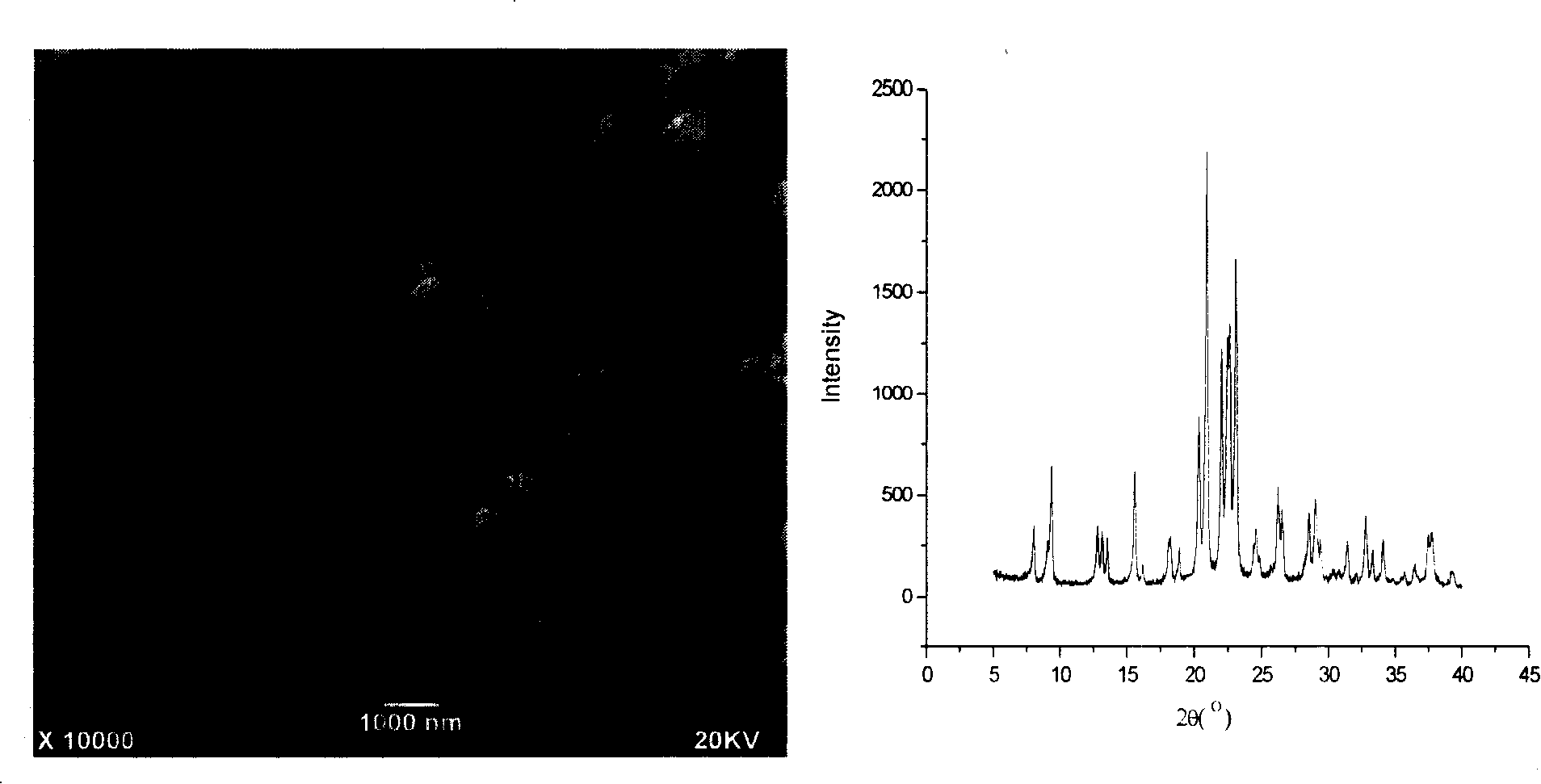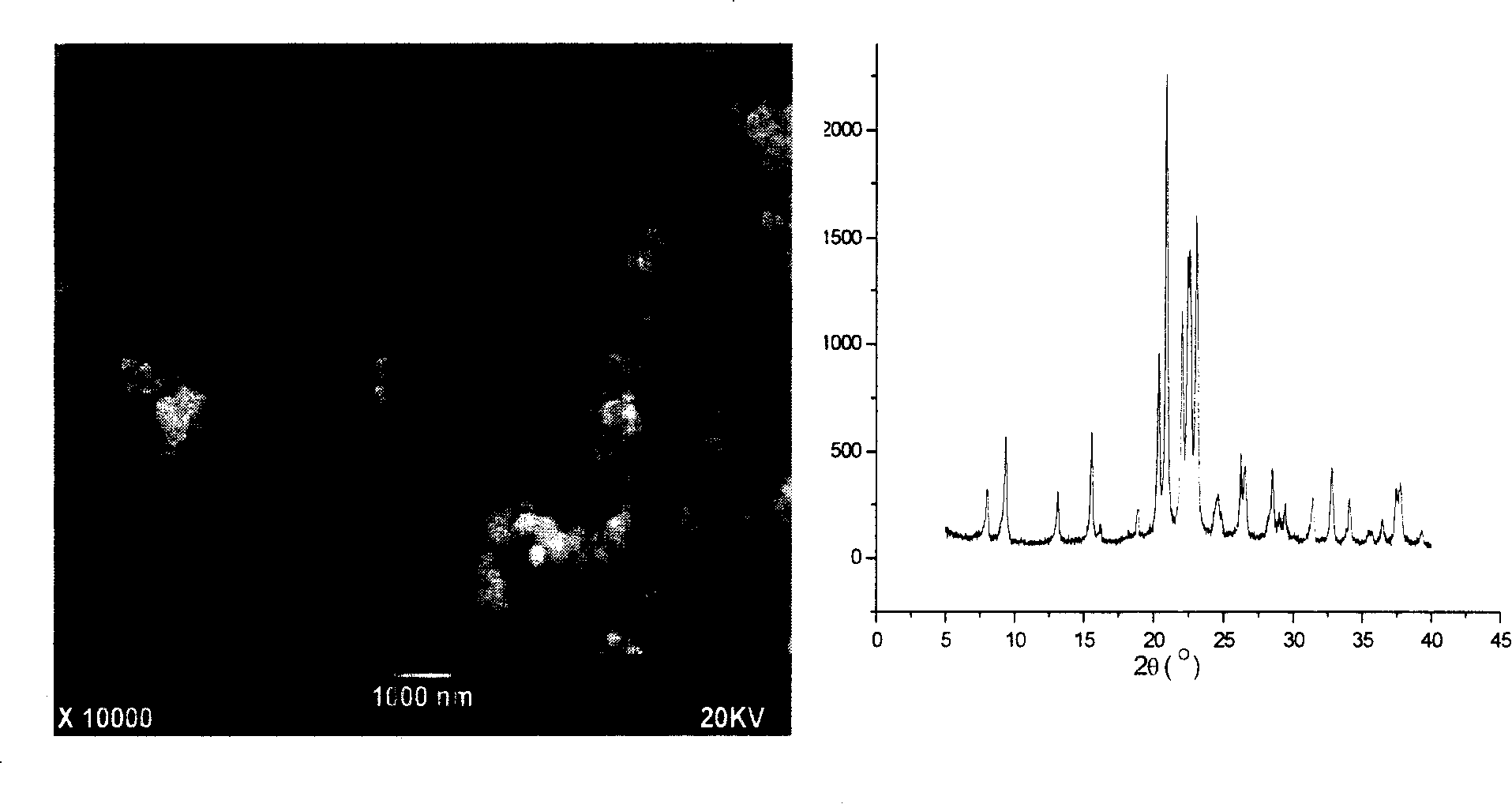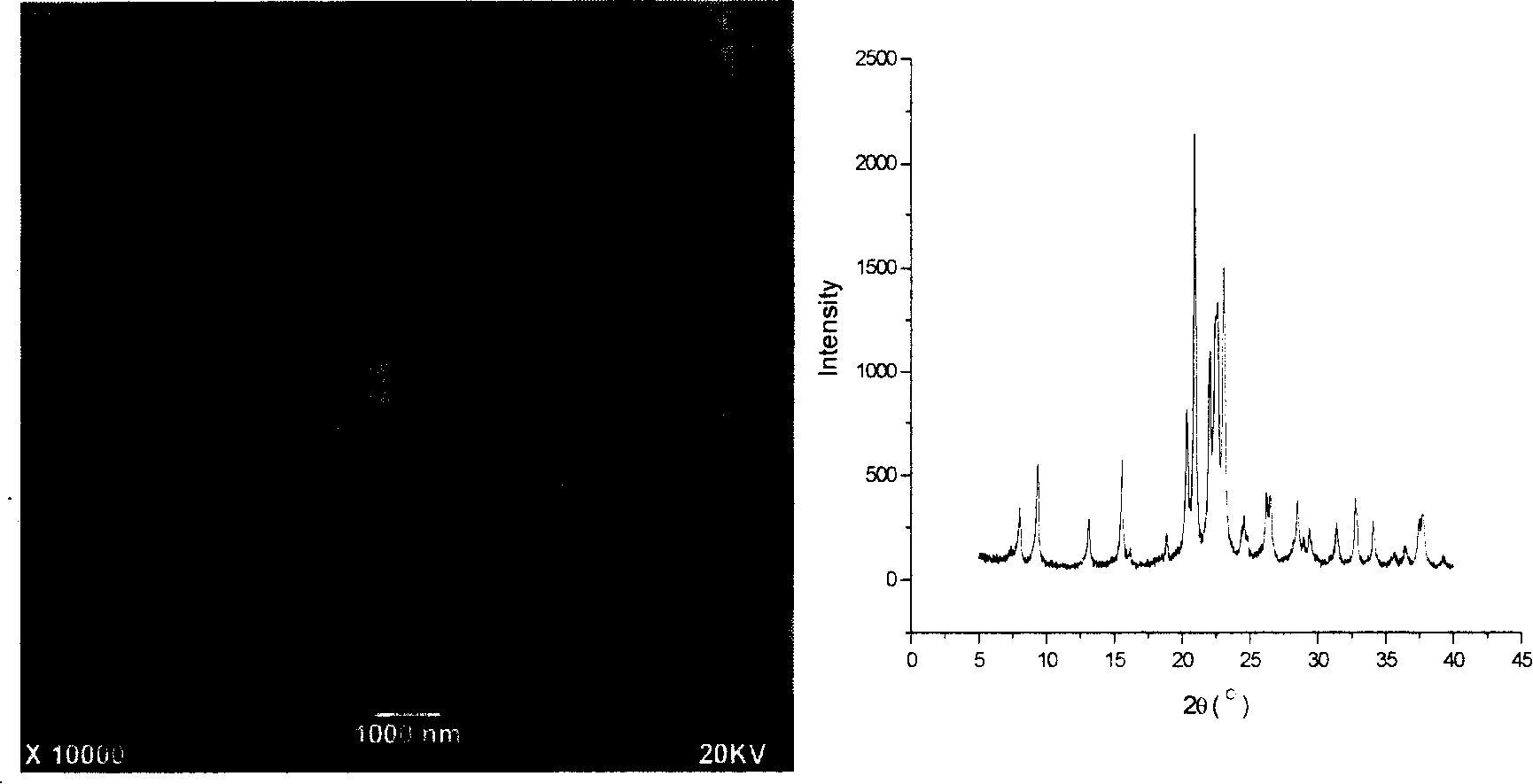Method for preparing small-grain SAPO-11 molecular sieve
A SAPO-11, molecular sieve technology, applied in the direction of molecular sieve and alkali-exchanged phosphate, molecular sieve characteristic silicoaluminophosphate, etc., can solve the problems of increased cost and complex synthesis system, and achieves low synthesis cost and simple process steps. Effect
- Summary
- Abstract
- Description
- Claims
- Application Information
AI Technical Summary
Problems solved by technology
Method used
Image
Examples
Embodiment 1
[0035] 0.4 moles of phosphoric acid (as H 3 PO 4meter, the same below) was added to 5.1 moles of distilled water, placed in a constant temperature water bath at 35°C and mixed evenly, and 0.2 moles of pseudo-boehmite (as Al 2 o 3 After stirring and reacting to form a gel, slowly add a mixture of 0.12 moles of di-n-propylamine and 0.08 moles of diisopropylamine to the above-mentioned gel, and then add 0.08 moles of silica sol (based on SiO 2 meter, the same below), add acid to adjust the pH value to 3.5-7.0, and continue to stir to form a gel reaction mixture.
[0036] Put the above reaction mixture into a crystallization kettle with a polytetrafluoroethylene liner, first age at 130°C under autogenous pressure for 2.5 hours, then cool to room temperature, add 50% wt of distilled water and stir evenly, and then at 190°C Crystallization under autogenous pressure for 20 hours. Finally, the crystallized product is filtered, washed, and dried at 100-110°C to obtain the molecular...
Embodiment 2
[0039] The preparation of the gel reaction mixture was the same as in Example 1. Put the reaction mixture into a crystallization kettle with a polytetrafluoroethylene liner, age at 150°C for 2 hours under autogenous pressure, then cool to room temperature, add 60% by weight of distilled water and stir evenly, and then at 190°C Crystallization under autogenous pressure for 24 hours. Finally, the crystallized product is filtered, washed, and dried at 100-110°C to obtain the molecular sieve powder.
[0040] Get part crystallization product to measure by X-ray diffraction and SEM, the result is as follows: figure 2 shown. It shows that the silicoaluminophosphate molecular sieve synthesized by this method has an AEL structure, is a SAPO-11 molecular sieve, and its grain size is 300-400 nm.
Embodiment 3
[0042] The preparation of the gel reaction mixture was the same as in Example 1. Put the reaction mixture into a crystallization kettle with a polytetrafluoroethylene liner, first age at 175°C under autogenous pressure for 1.5 hours, then partially cool to room temperature, add 40% distilled water and stir evenly, and then at 190°C Crystallization under autogenous pressure for 28 hours. Finally, the crystallized product is filtered, washed, and dried at 100-110°C to obtain the molecular sieve powder.
[0043] Get part crystallization product to measure by X-ray diffraction and SEM, the result is as follows: image 3 shown. It shows that the silicoaluminophosphate molecular sieve synthesized by this method has an AEL structure, is a SAPO-11 molecular sieve, and its grain size is 500-800nm.
PUM
 Login to View More
Login to View More Abstract
Description
Claims
Application Information
 Login to View More
Login to View More - R&D
- Intellectual Property
- Life Sciences
- Materials
- Tech Scout
- Unparalleled Data Quality
- Higher Quality Content
- 60% Fewer Hallucinations
Browse by: Latest US Patents, China's latest patents, Technical Efficacy Thesaurus, Application Domain, Technology Topic, Popular Technical Reports.
© 2025 PatSnap. All rights reserved.Legal|Privacy policy|Modern Slavery Act Transparency Statement|Sitemap|About US| Contact US: help@patsnap.com



